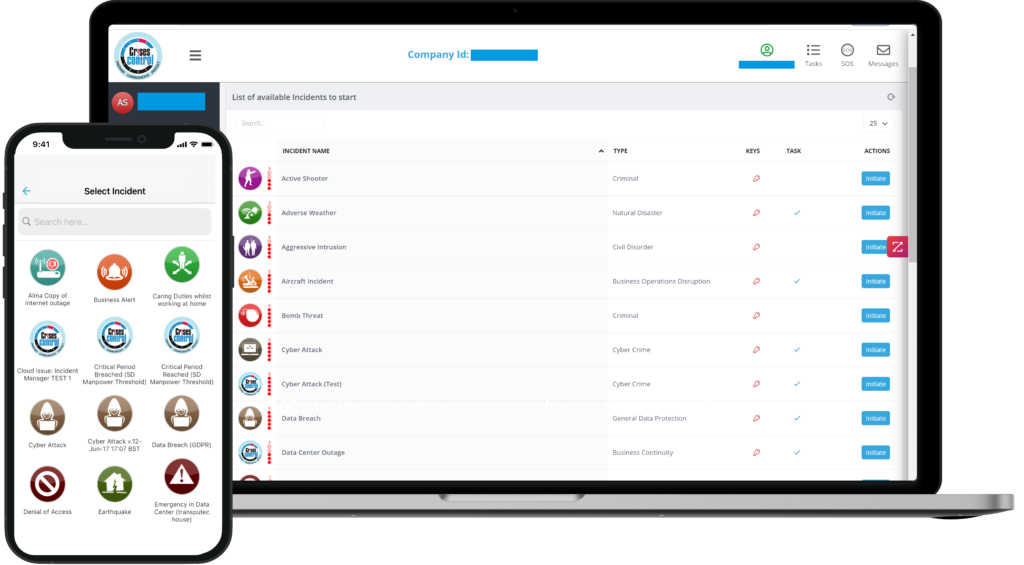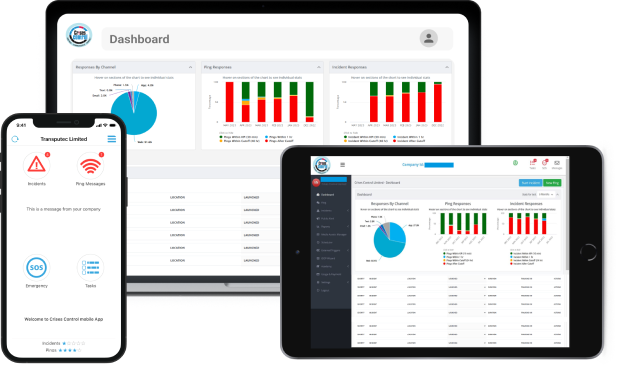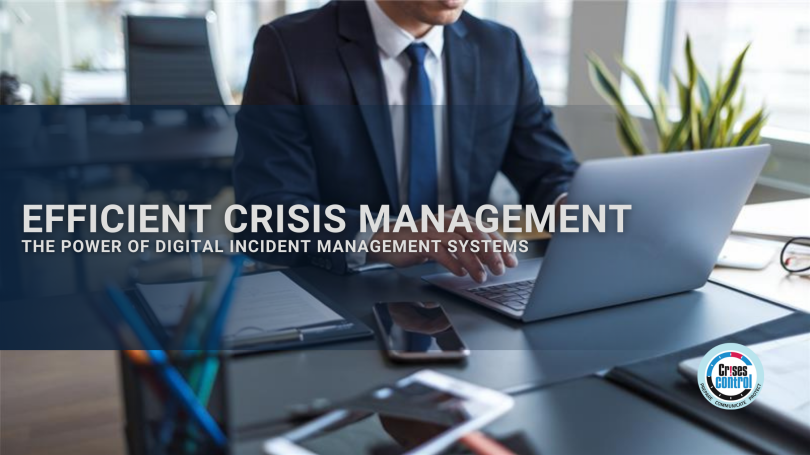Written by Ikram Tassi | Marketing
Every manager dreads the phone call that announces, “We have an incident.” Whether it’s a data breach, equipment failure, or natural disaster, the stakes are high, and the pressure is on to respond effectively. Traditional incident reporting systems often struggle under this pressure, leading to delays, confusion, and unnecessary escalation.
In this blog, we’ll explore how Digital Incident Management Systems solve these challenges, why they’re indispensable for modern businesses, and how Crises Control can help you transform chaos into clarity during critical moments.
The Problem with Traditional Incident Reporting
For many businesses, managing incidents is a reactive and disjointed process. Here are the main limitations:
1. Slow and Inaccurate Reporting
When incidents are reported manually—via forms, spreadsheets, or ad hoc emails—valuable time is lost. Mistakes happen, critical details are overlooked, and reports often lack consistency. This can lead to misinformed decisions that worsen the situation.
2. Communication Breakdowns
When communication is siloed across multiple channels like emails, phone calls, or messaging apps, teams lose precious time coordinating responses. Often, key stakeholders are left out of the loop, further delaying action.
3. Limited Real-Time Visibility
Without real-time updates, managers are left making decisions based on incomplete or outdated information. The lack of a centralised dashboard means teams are often unsure about the status of an incident or who is handling what.
How Digital Incident Management Systems Solve These Problems
Digital tools are designed to eliminate inefficiencies and enhance response times. They bring order to chaos by automating processes and centralising information.
1. Faster Incident Reporting Through Automation
Digital systems simplify the reporting process. Employees can log incidents instantly via mobile apps or web portals, while the system captures critical details like time, location, and severity. This ensures consistent and accurate reporting every time.
2. Real-Time Updates for Better Decision-Making
Live dashboards provide up-to-the-second information on incident status, team assignments, and resolution progress. Managers gain a bird’s-eye view of the situation, enabling faster and more informed decisions.
3. Unified Communication Across Channels
A Digital Incident Management System consolidates all communication channels. Whether it’s sending alerts via SMS, emails, app notifications, or voice calls, the system ensures that everyone stays on the same page.
4. Scalability to Fit Your Needs
Whether you’re managing a single office or a global operation, digital systems adapt to your requirements. They handle incidents of any scale, from a minor equipment failure to a major cybersecurity attack.
How Crises Control Stands Out
At Crises Control, we understand that no two crises are the same. That’s why our platform is built to provide flexibility, speed, and simplicity for organisations of all sizes.
1. End-to-End Incident Management
Crises Control streamlines every stage of incident management—from initial reporting to post-incident analysis. You can configure workflows to suit your business needs, ensuring that responses are efficient and tailored.
2. Real-Time Incident Reporting System
Our platform enables immediate reporting through an intuitive mobile app. With GPS tagging, multimedia uploads, and automatic escalation, incidents are captured and addressed with unmatched accuracy.
3. Centralised Communication
Crises Control’s multi-channel notification system ensures no one is left in the dark. Alerts are sent simultaneously across SMS, email, app notifications, and voice calls. This means critical information reaches the right people instantly, reducing response times.
4. Regulatory Compliance Made Simple
For industries with strict compliance requirements, Crises Control ensures that all actions are logged and traceable. This creates a robust audit trail for incident reporting and resolution, making regulatory audits stress-free.

Interested in our Incident Management Software?
Customise your Crisis Incident Management Software to meet your specific needs with our flexible tools & stay connected and informed during the crisis and incident management process
The Benefits of Digital Incident Management Systems
Adopting a system like Crises Control doesn’t just solve immediate problems—it brings long-term advantages that elevate your organisation’s resilience and efficiency.
1. Increased Operational Efficiency
Automated workflows and centralised communication eliminate redundant tasks, freeing up your team to focus on resolving incidents.
2. Improved Employee Safety and Confidence
When employees know that a robust incident management system is in place, they feel safer and more confident in their roles.
3. Enhanced Customer Trust
Swift and effective crisis management minimises service disruptions, ensuring customers see your organisation as reliable and prepared.
4. Cost Savings Through Prevention
By addressing incidents quickly, businesses can avoid costly downtime, regulatory fines, and reputational damage.
Why Businesses Need to Act Now
In an era where threats are increasingly complex—from cyberattacks to supply chain disruptions—waiting until disaster strikes is not an option. Businesses that adopt Digital Incident Management Systems today gain a critical edge in resilience and response.
Crises Control empowers businesses to respond to incidents confidently and effectively, no matter the scenario. With our platform, you can transition from reactive crisis management to proactive risk mitigation.
Take Control Today with Crises Control
Don’t let chaos dictate your response during critical incidents. With Crises Control, you can simplify incident reporting, accelerate response times, and protect what matters most.
Contact us today to schedule a free demo and see how Crises Control can help your organisation transform chaos into clarity.
Request a FREE Demo

